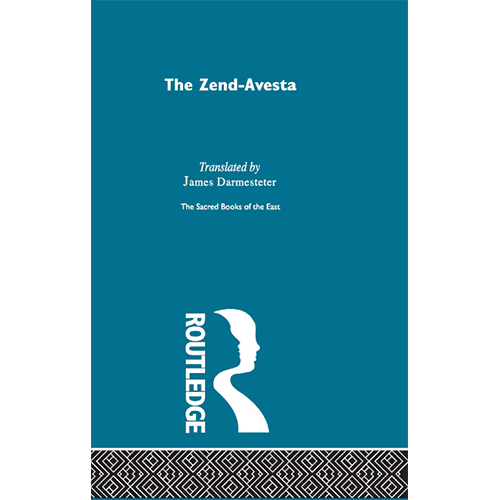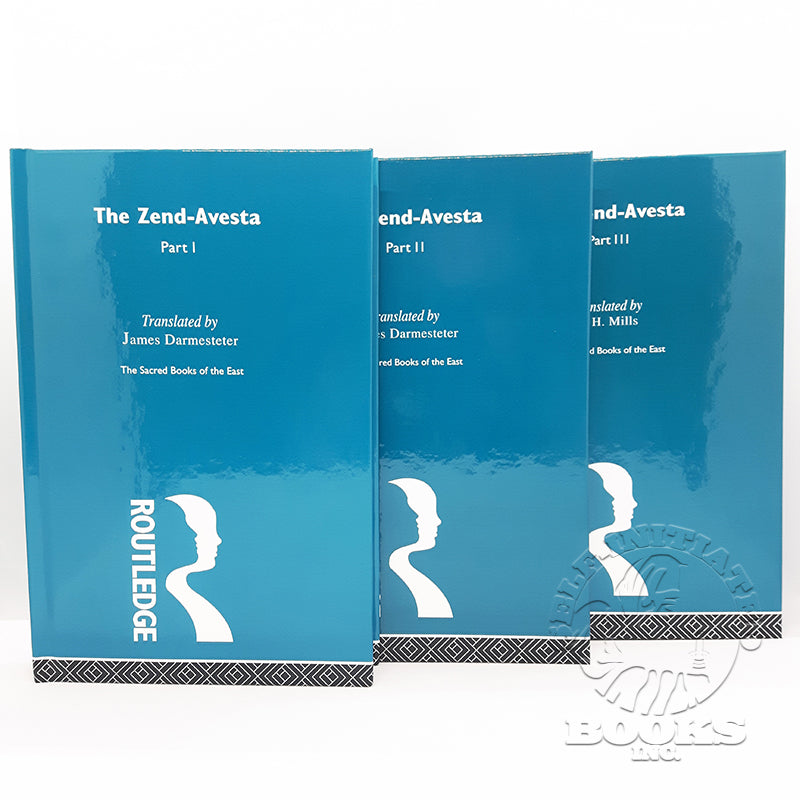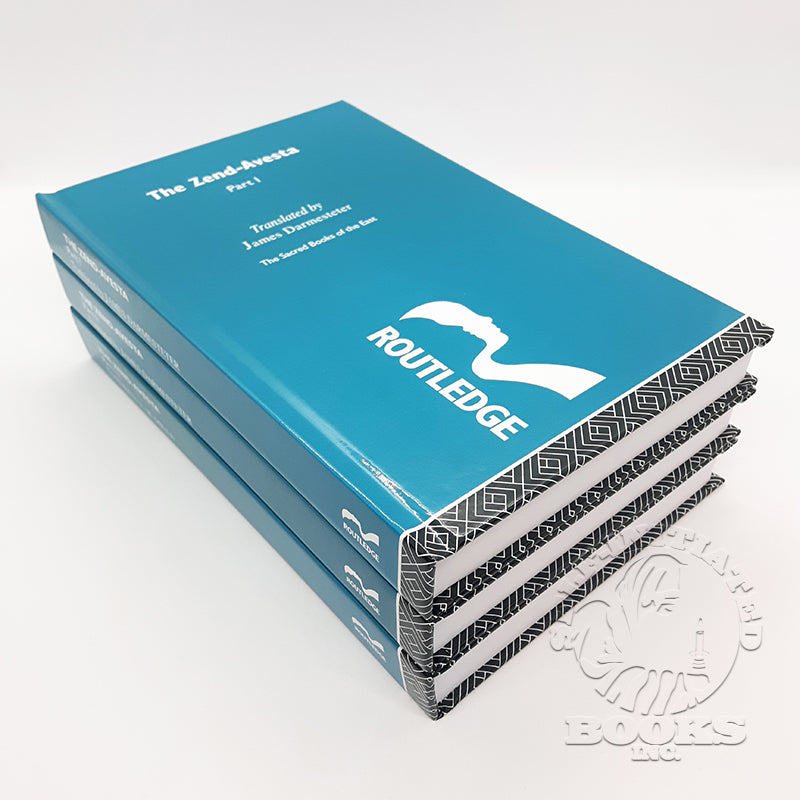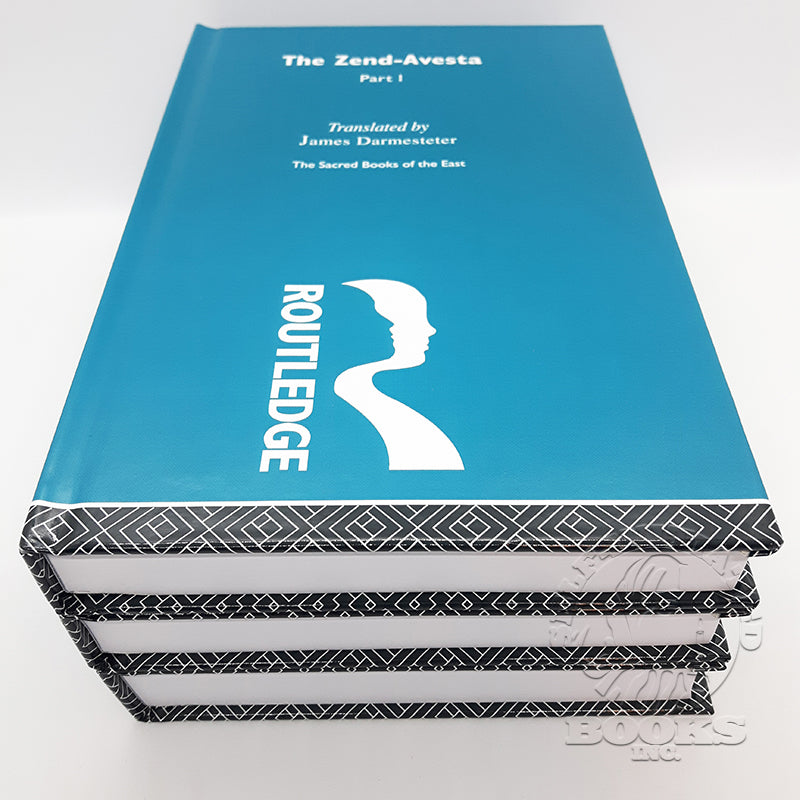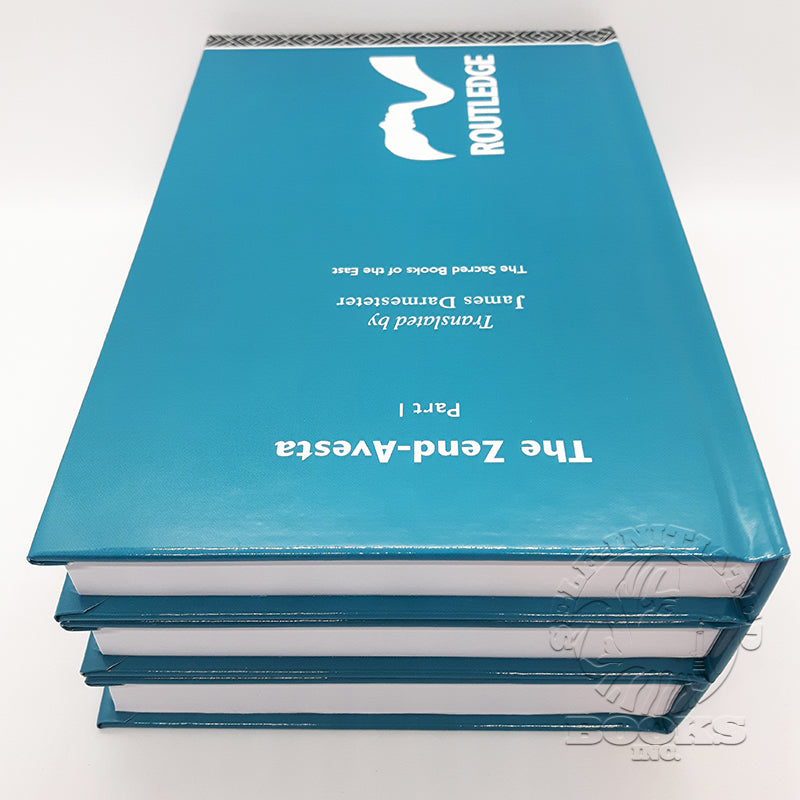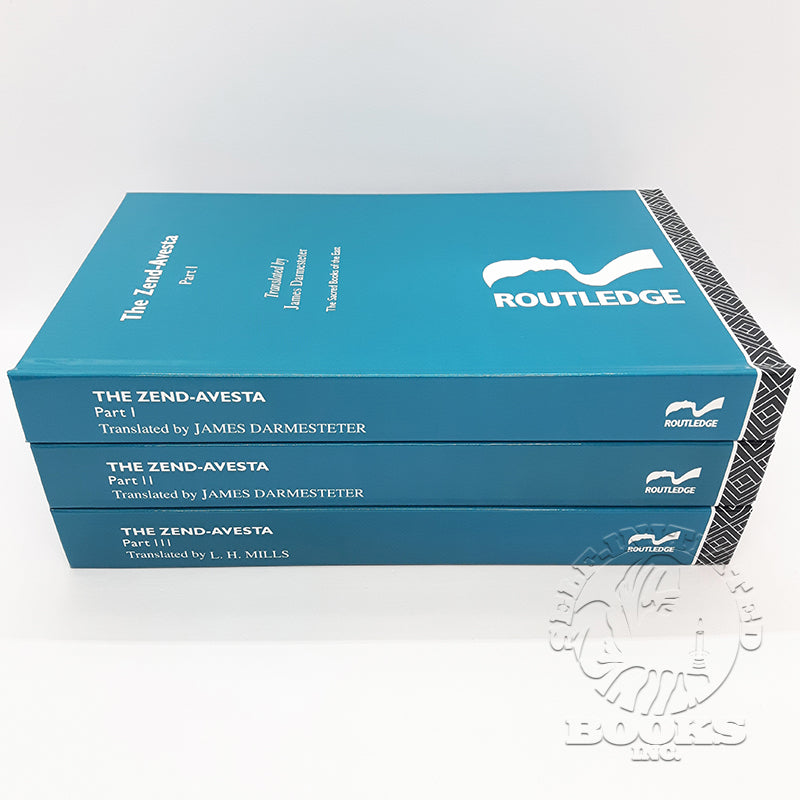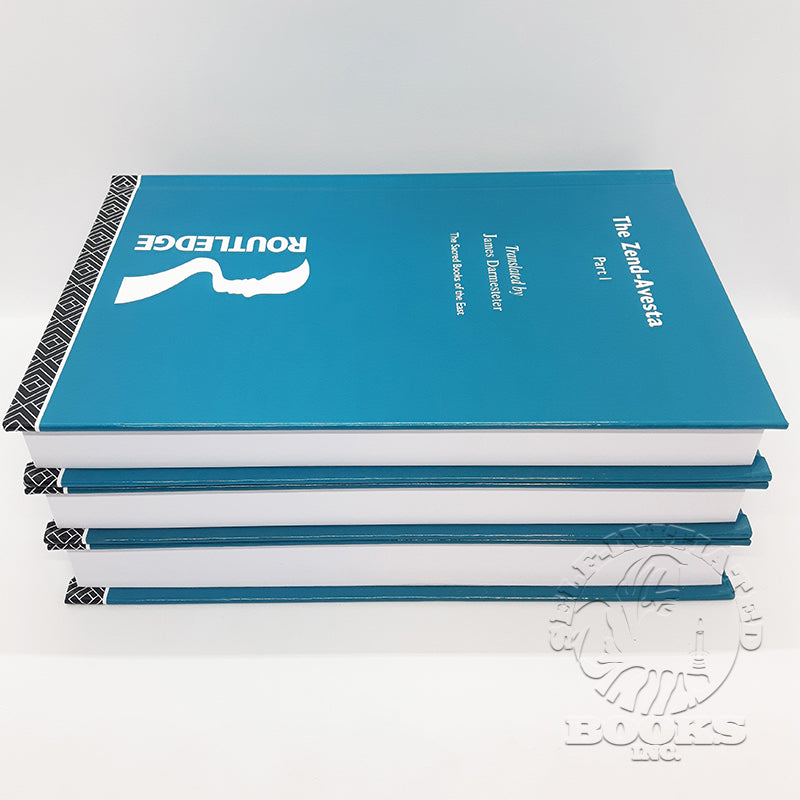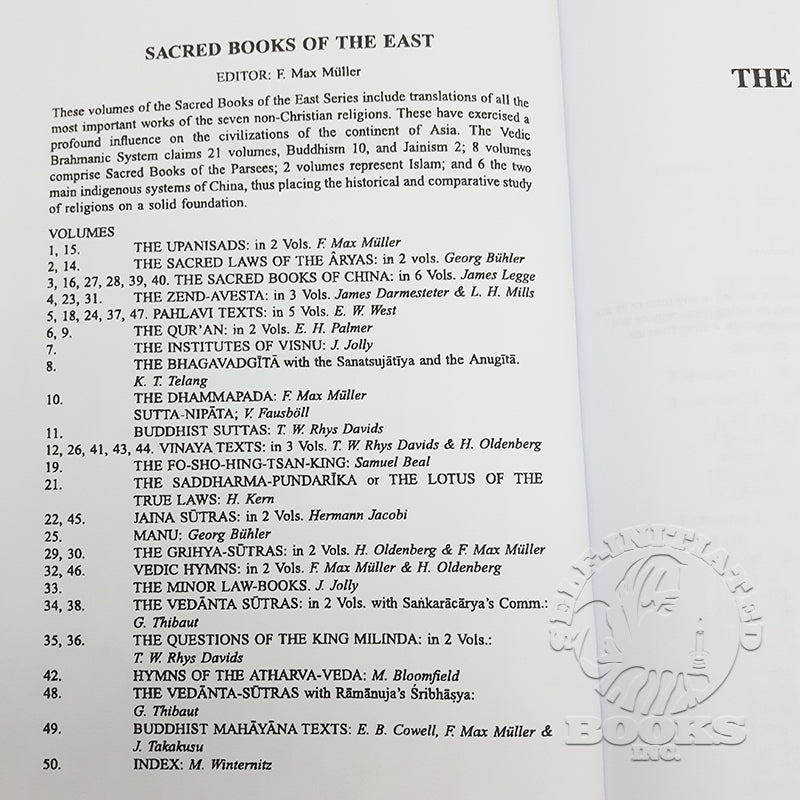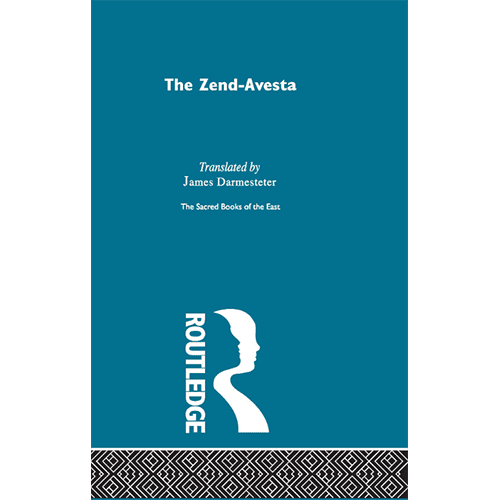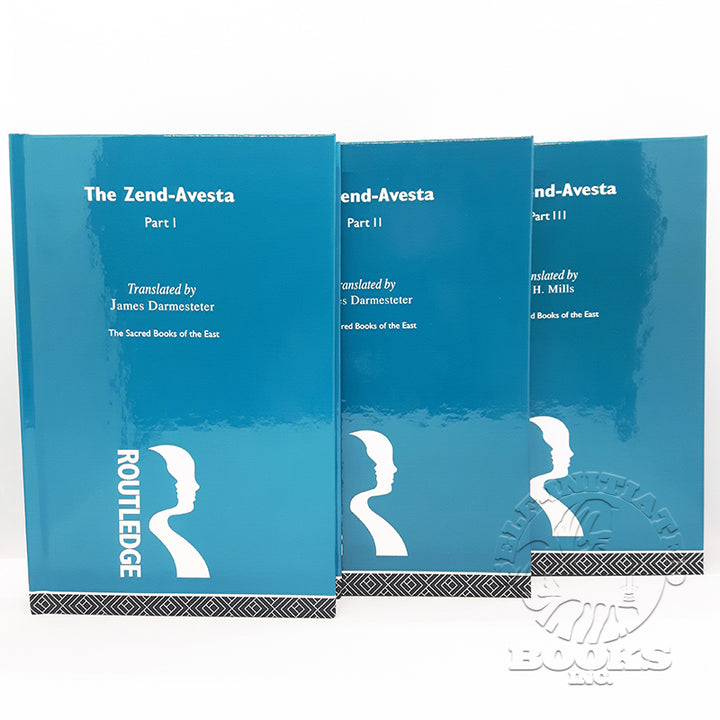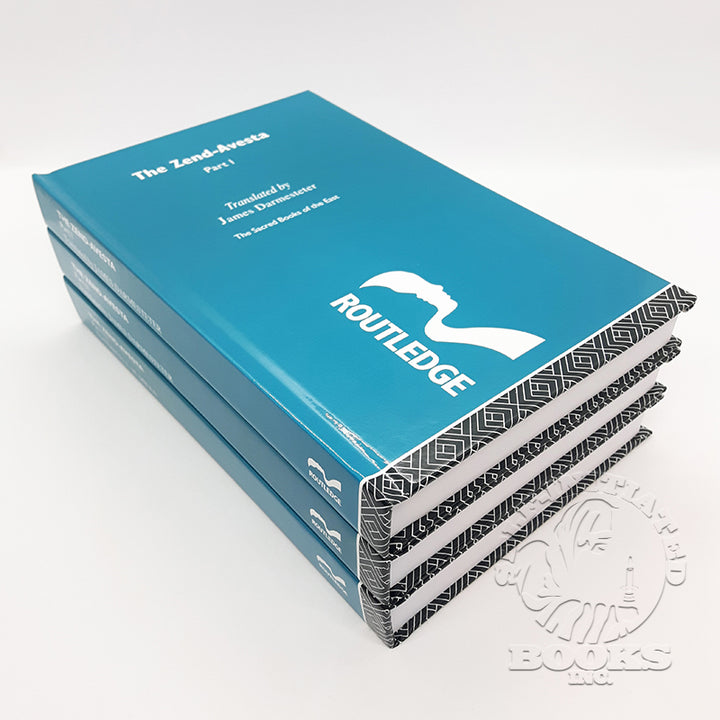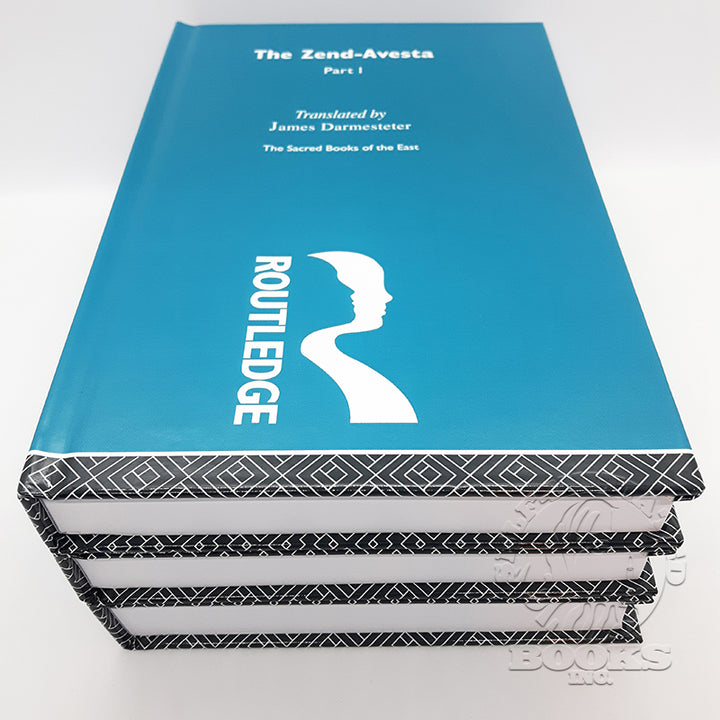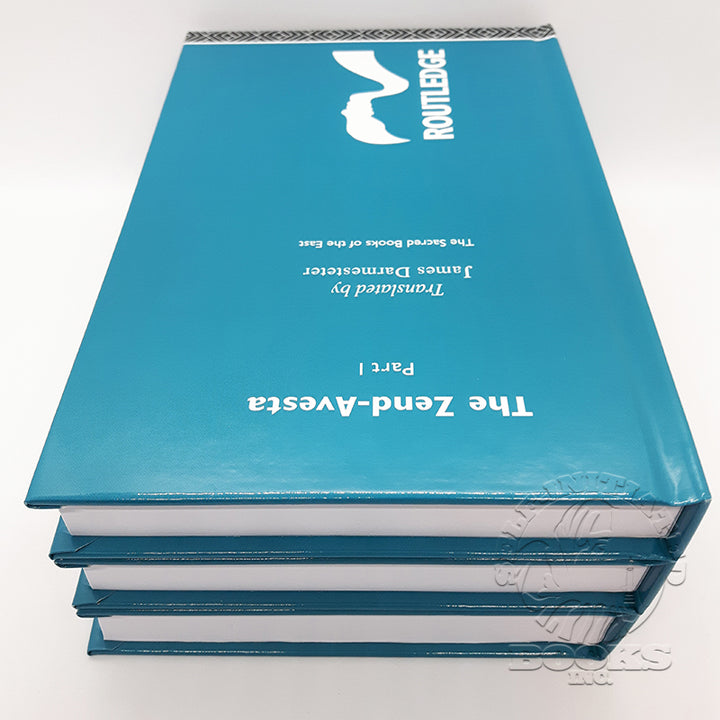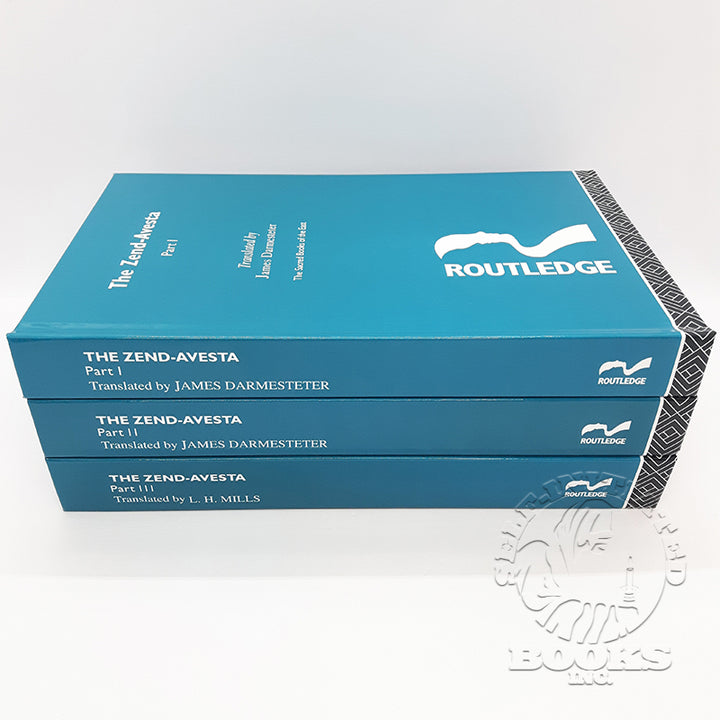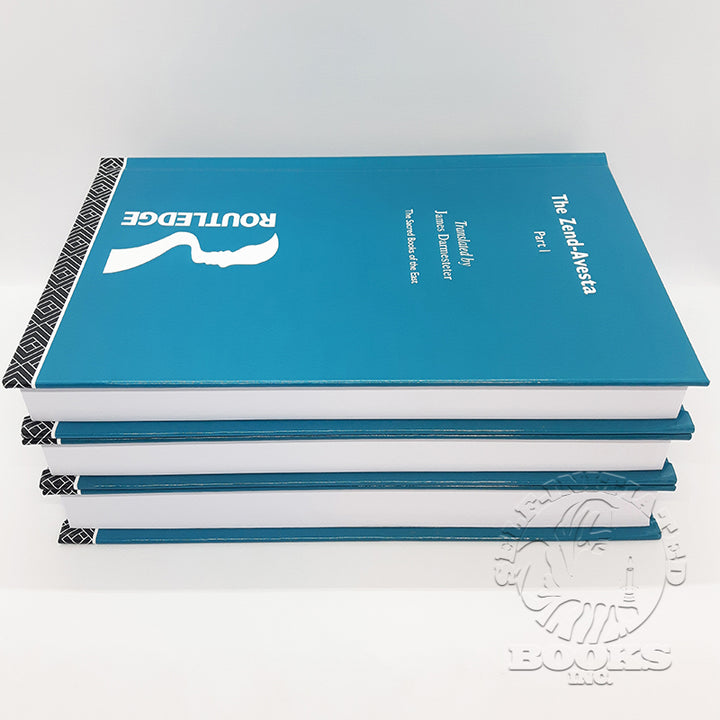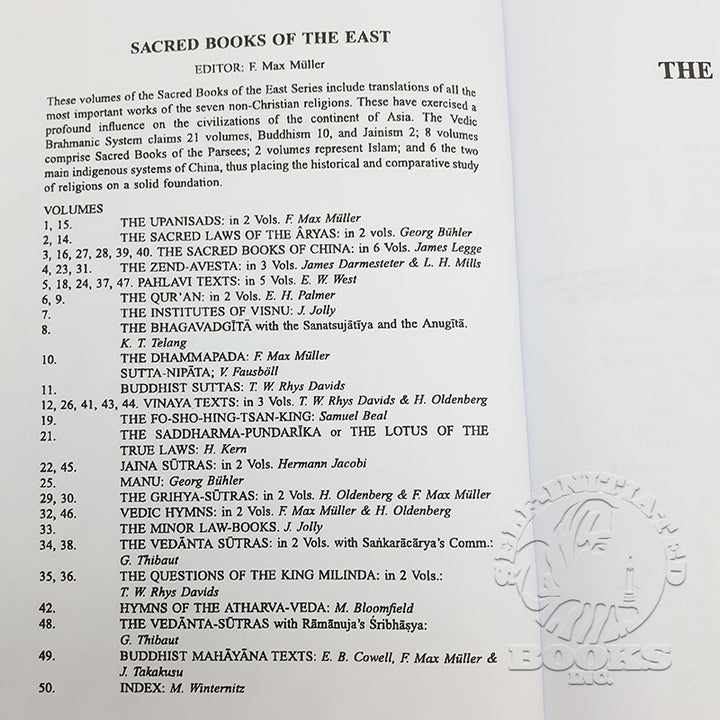The Zend-Avesta edited by Max Muller
- Free Shipping USA
- International Delivery Duty Paid*
- In stock, ready to ship
- Inventory on the way
The Zend Avesta (In Three Volumes)
Author: Zarathustra?
Editor: Friedrich Max Müller
Language: English
Translators: James Darmesteter, L.H. Mills
Format: Three Hardcovers
Pages: 1,018 total
Condition: NEW
As the Parsis are the ruins of a people, so are their sacred books the ruins of a religion. There has been no other great belief in the world that ever left such poor and meagre monuments of its past splendour. Yet great is the value which that small book, the Avesta, and the belief of that scanty people, the Parsis, have in the eyes of the historian and theologian, as they present to us the last reflex of the ideas which prevailed in Iran during the five centuries which preceded and the seven which followed the birth of Christ, a period which gave to the world the Gospels, the Talmud, and the Qur'an. Persia, it is known, had much influence on each of the movements which produced, or proceeded from, those three books ; she lent much to the first heresiarchs, much to the Rabbis, much to Mohammed. By help of the Parsi religion and the Avesta, we are enabled to go back to the very heart of that most momentous period in the history of religious thought, which saw the blending of the Aryan mind with the Semitic, and thus opened the second stage of Aryan thought.
Part 1
Contains the Vendidad, one of the oldest ecclesiastical codes. Originally composed in Avesta, an early Iranian language, the text focuses on the foundation of Zoroastrianism.
Part 2
Contains the mythical lore of Yast, Sirozah, and Nyasis. A more poetic text, readers will broaden their knowledge of Zoroastrianism with this book.
Part 3
Contains Yasna, the main liturgical text of Zoroastrianism, dating back to the religion's earliest period and is still used today.
Friedrich Max Müller (1823-1900), was a German author and orientalist who lived in England most of his life. As a professor at Oxford, he combined the studies of language, culture, and religion to create the discipline of comparative mythology. His body of work included The Sacred Books of the East, which he had edited.
James Darmesteter (1849-1894), was born in France to Jewish parents and devoted his studies to the Persian religion of Zoroastrianism, asserting it was influenced by Judaism, contrary to most scholars. He was a noted translator and teacher with a passion for Orientalism.
L. H. Mills (1837-1918), was born in New York City and attended NYU before becoming Professor of Zend Philology at Oxford University. An authority on the Avestan language, Mills translated The Zend-Avesta, Part 3.
ESTIMATED IN BUSINESS DAYS:
USA: 2-9
Canada: 2-9
United Kingdom: 6-10
Europe: 11-15
New Zealand: 15-19
Australia: 17-21
Africa: 17-21
South America: 18-22
PACKED FOR A JOURNEY



